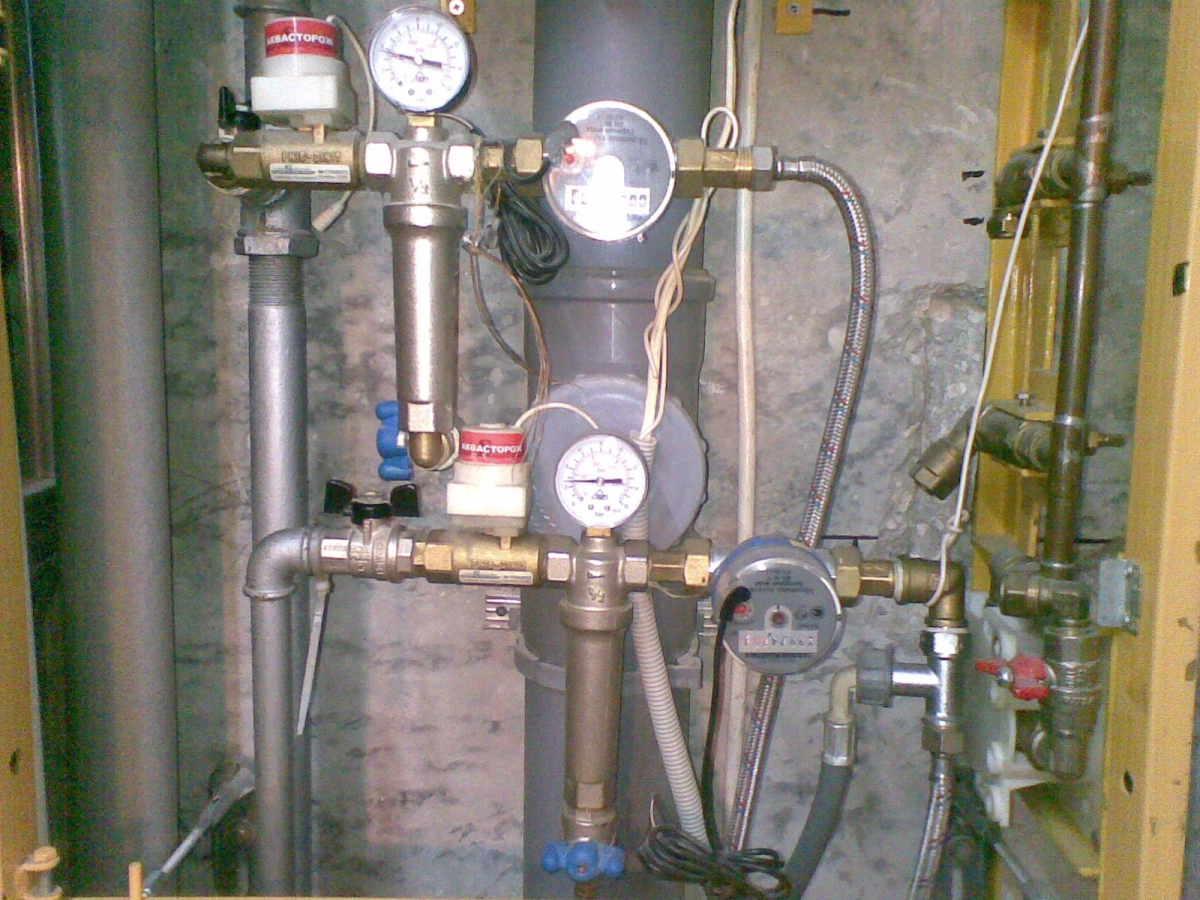Whoever gets up first, that ... has to drain hot water for a long time to wash. We learned this simple truth thanks to the houses built in the middle of the 20th century.
Towel warmers cooling down in the absence of water intake and, as a result, a damp and cool bathroom complete the dull picture. Not everyone knows that both problems have long been solved by engineers. Meet: hot water with recirculation!
Traditional DHW distribution
The device of the hot water supply system in stalinkas and early Khrushchevs is no different from wiring cold water. The only bottling ends with dead-end risers, from which the apartment wiring departs. In the elevator unit, the filling branches into two tie-ins - into the supply and return threads.
Switching DHW from supply to return is carried out manually in accordance with temperature graph heating:
- When the temperature of service water at the outlet of the CHP is up to 80-90 degrees, DHW is supplied from the supply;
- When 90°C is exceeded, the water supply switches to reverse water supply.
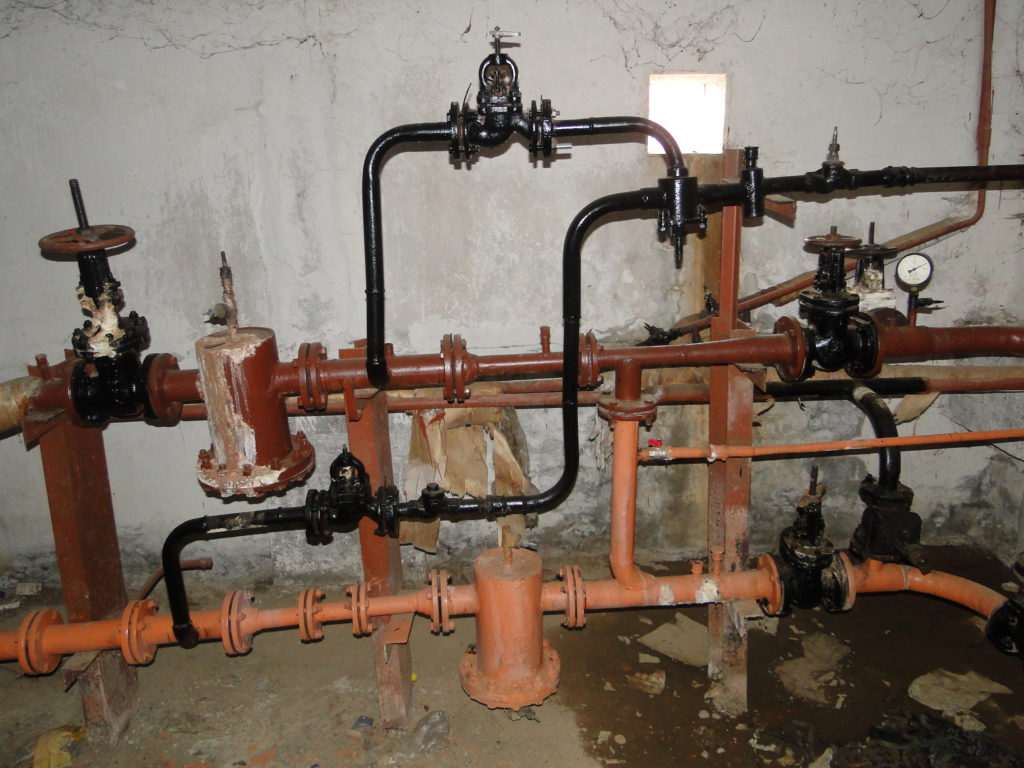
Why is it bad
The advantages of such a scheme are the low cost of implementation and extremely simple maintenance. There are also downsides.
We have already mentioned two of them:
- Without water intake, the water in the risers and piping cools down. To wash or take a shower, it has to be drained into the sewer for a long time (up to several minutes). For apartment residents, this means not only a loss of time, but also significant costs: in fact, you drain cold water, but if you have a water meter, you pay for it as if it were hot;

Reference: cost per cubic meter hot water in the middle of 2017 for residents of Moscow is 163 rubles. It is estimated that during the year a family of 3-4 people drains at least 10-12 cubic meters into the sewer in anticipation of heating water.

- Towel dryers that open the domestic hot water supply lines are heated only from the water intake in your apartment. Pro quality heating you can forget the bathroom.

Let's throw a handful of little things into the common treasury of the shortcomings of the solution:
- Cold and dampness in the bathroom contribute to the appearance of the fungus;

- Towels hung on a cold dryer quickly become musty;
- Cyclic heating and cooling of DHW risers are accompanied by cycles of their elongation and reduction in size. As a result, the sealing of the risers in the ceiling with cement mortar is gradually destroyed.

Note: the elongation of pipes during heating in the event that they touch the ceiling reinforcement can be accompanied by rather loud sounds. In the author's memory, the friction of the riser against the reinforcement led to a comical situation: the tenants accused their neighbors in the riser of .. clandestine money printing.
All in white and on a white horse
How does a hot water system with recirculation differ from the one described above? It's easy to guess. In it, hot water continuously circulates through the spills and (in the case of high-rise building) hot water risers.
As a result:
- Provides instantaneous supply of hot water to the draw-off point in any part of the circuit;
- Towel dryers are transferred from the intra-apartment supply to the riser (or, in the case of a private house, bottling) of hot water. Thanks to continuous circulation, they remain hot around the clock, provide heating for bathrooms and toilets, and at the same time quick drying towels
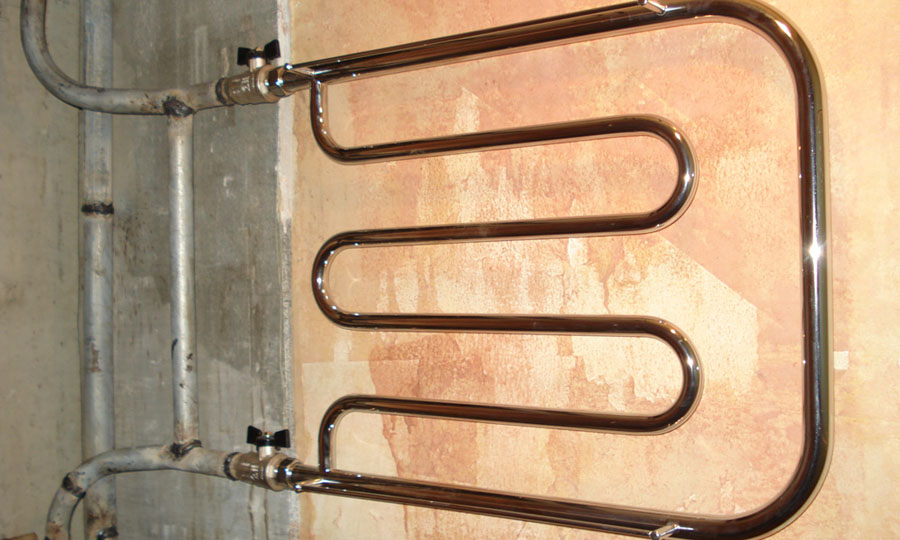
- The temperature regime of the DHW system remains stable, without cyclic cooling and heating.
Implementation
What schemes of hot water supply with recirculation are possible in multi-apartment and private houses?
apartment buildings
To create a continuous circulation of water, the DHW system must be looped.
In apartment buildings, this is achieved as follows:
| Image | Description |
|
|
There are two bottlings of hot water in the house. The risers are connected to them in turn. As an option - only DHW risers are connected to one of the fillings, only risers with heated towel rails are connected to the second |
|
|
DHW risers (optional - DHW and heated towel rails) are connected by jumpers on the top floor. The group can combine 2-4 risers. At the upper point of the jumper, an air vent (Maevsky's crane) is mounted, which allows you to bleed the air that prevents circulation. |
It is curious: in some houses built in the late 80s, the author observed jumpers between the hot water risers, placed on cold attic. The decision raises doubts about the adequacy of the authors: at a street temperature of -30 ° C and below, they freeze within an hour after stopping the circulation in the DHW system (for example, for emergency repair of a valve in an elevator unit).
It is clear that the described water supply scheme with recirculation will not work without a pressure drop.
How it is provided:
- outside heating season DHW is switched on between the supply and return threads;

- During heating operation with this connection, the hot water supply system will be a bypass for heating system, catastrophically reducing the drop on the water jet elevator. Therefore, DHW is connected depending on the temperature of the water from supply to supply or from return to return, and the difference is provided by retaining washers installed on the flanges between the tie-ins.
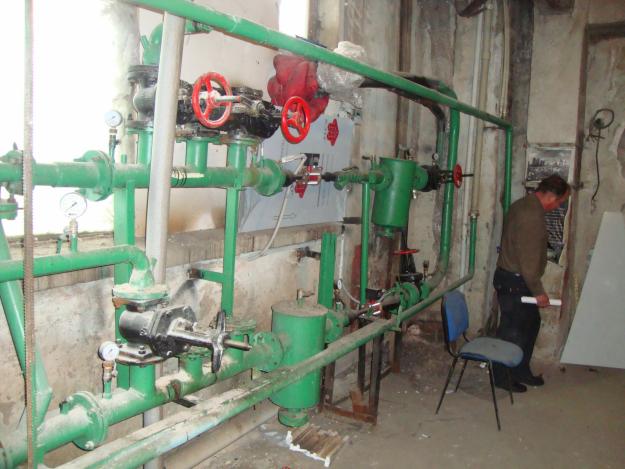
Reference: retaining washer - steel pancake with a hole in the middle. Hole diameter is usually 1mm larger diameter elevator nozzles. When water moves through the washer, a difference of 0.1 - 0.3 kgf / cm is created on it, which is quite sufficient for circulation in the DHW system.
If the risers are airy
What should I do if, after the hot water system has been reset, the air plug remaining in the risers prevents circulation and the heated towel rails remain cold?
To bleed air, a Mayevsky crane is used at the upper point of the jumper. However, to access it, you need to get into the upper apartment along the riser, which is not always possible.
Here is a simple step-by-step instruction, which will help you fix the problem yourself:
- We block any of the DHW risers connected by a jumper;
- We open one, or better, two hot water taps in any apartment along this riser to the stop. The air lock flies out through the mixer at the front of the water flow;
![]()
- We start the risers in the normal mode.
Private houses
What hot water recirculation schemes can be implemented in a private house with autonomous hot water preparation? For the creation of a circulation pressure in such a system, it is quite predictable that a circulation pump of minimum power (from 25 watts) will be responsible.
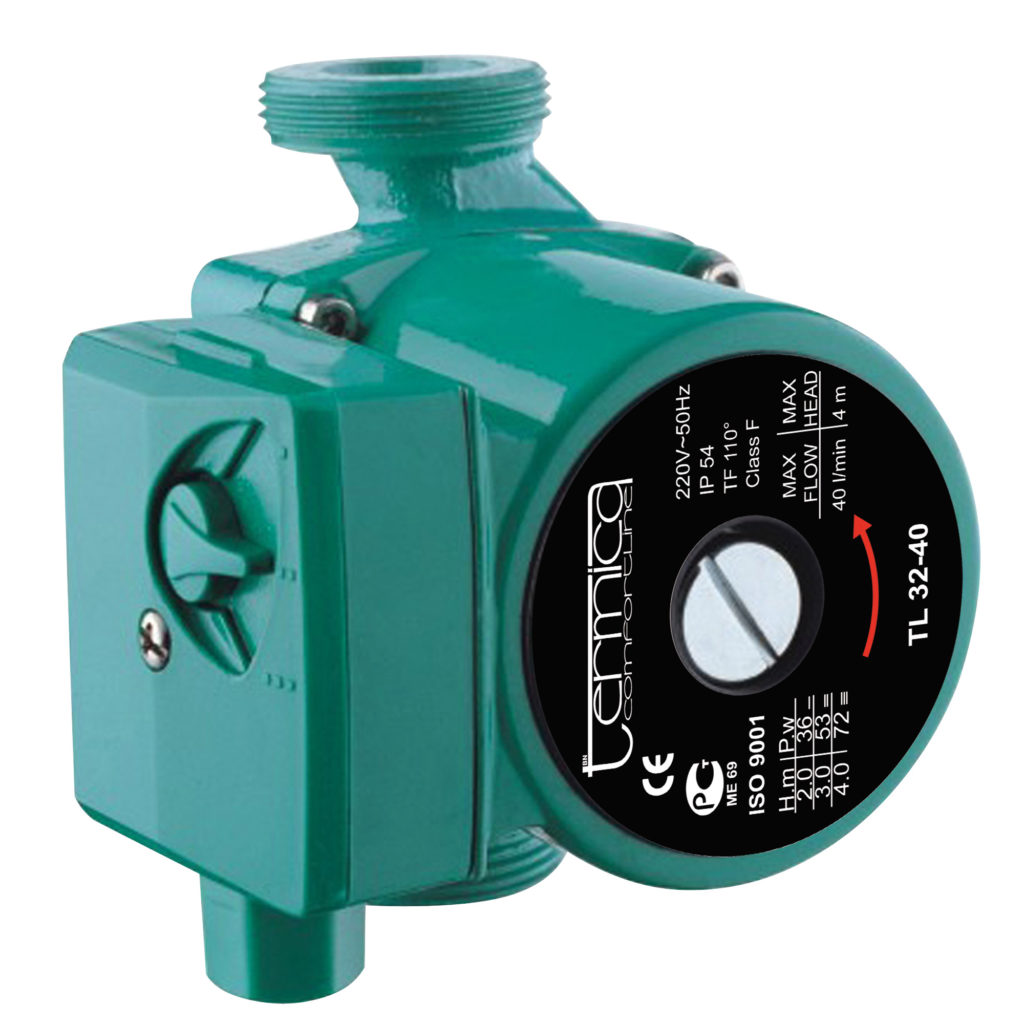
The DHW circuit must be looped along its entire length: after the plumbing fixture farthest from the water heater, the filling returns to the starting point. But the connection diagram of the water heater depends on whether it has an additional outlet for recirculation.
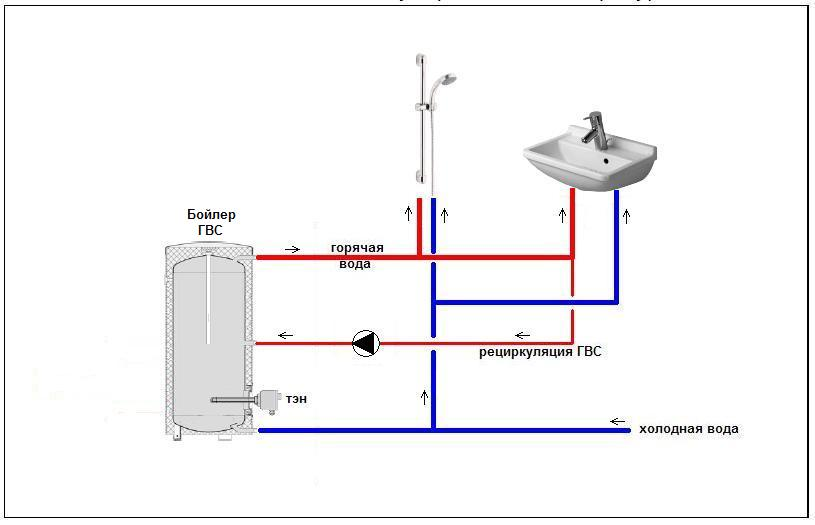
Is it possible to use a conventional boiler with two outlets (for hot water and cold water) in such a scheme? Yes, but in this case, the wiring will be much more complicated.
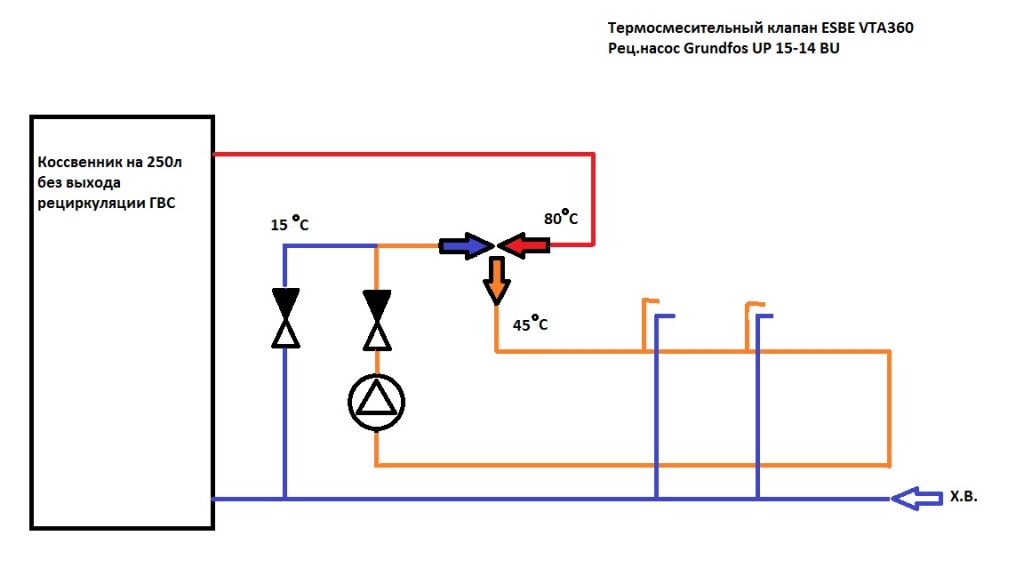
- A three-way thermostatic mixer is responsible for a constant water temperature in the recirculation circuit. As it cools, he mixes hot water from the boiler;

- To compensate for the flow of hot water, cold water is supplied to the three-way mixer;
- Check valves limit the movement of water in the circuit in one direction, regardless of its flow.
Useful: at the top of the DHW circuit, it makes sense to install an automatic air vent. Air locks in the presence of a pump will not interfere with circulation, but they can become a source of annoying hydraulic noise.
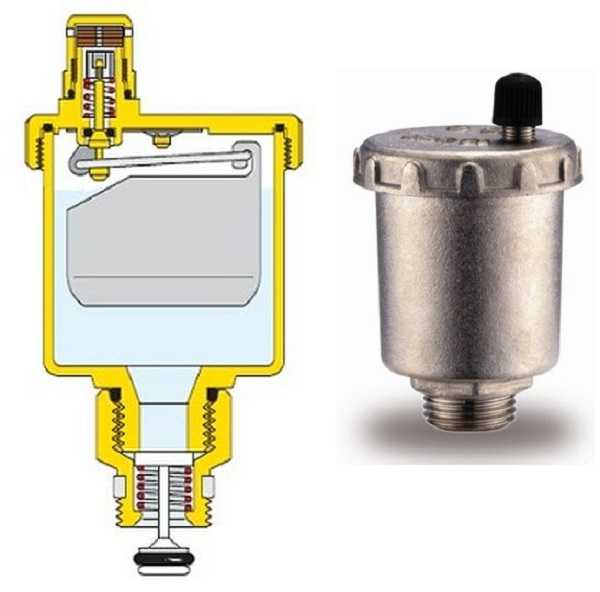
Conclusion
As you can see, hot water recirculation systems for a private house have quite convincing advantages over the usual dead-end circuits and are quite easy to install. The video in this article will help you learn more about them. Good luck!
Imagine an ordinary morning in one of the high-rise buildings of the sleeping area of our beloved city: a toilet bowl, a shower, a shave, tea, brush your teeth, water for the cat (or in any other order) - and go to work ... Everything is automatic and without hesitation. As long as cold water flows from the cold water tap, and hot water flows from the hot water. And sometimes you open a cold one, and from there - boiling water!! 11#^*¿>.
Let's figure it out.
Cold water supply or cold water
local pumping station supplies water to the main from the water utility network. A large supply pipe enters the house and ends with a valve, after which there is a water meter.
In short, the water meter assembly consists of two valves, a strainer and a meter.
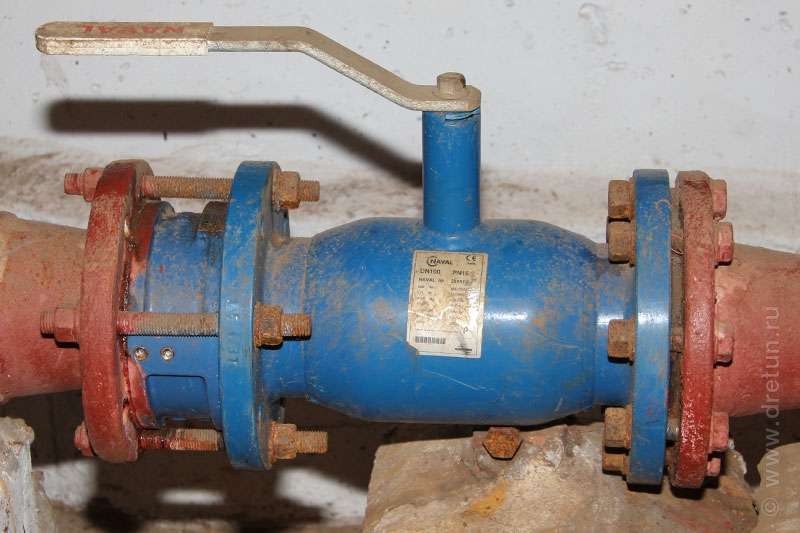
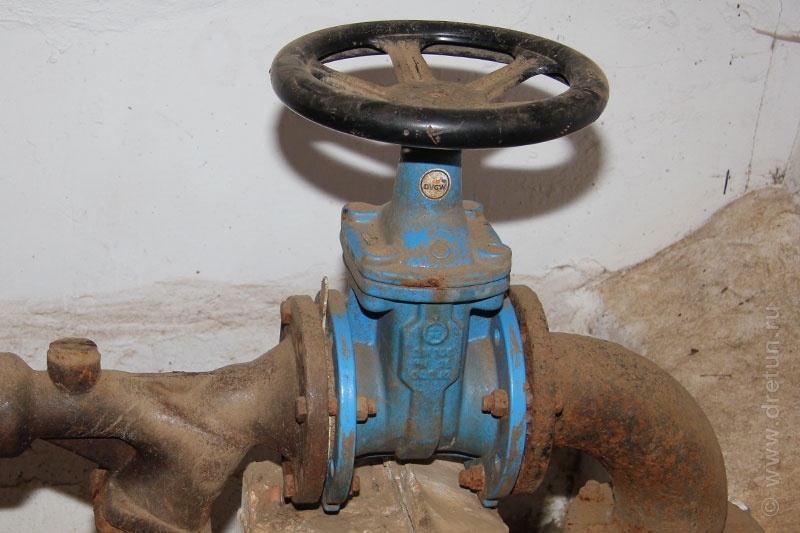
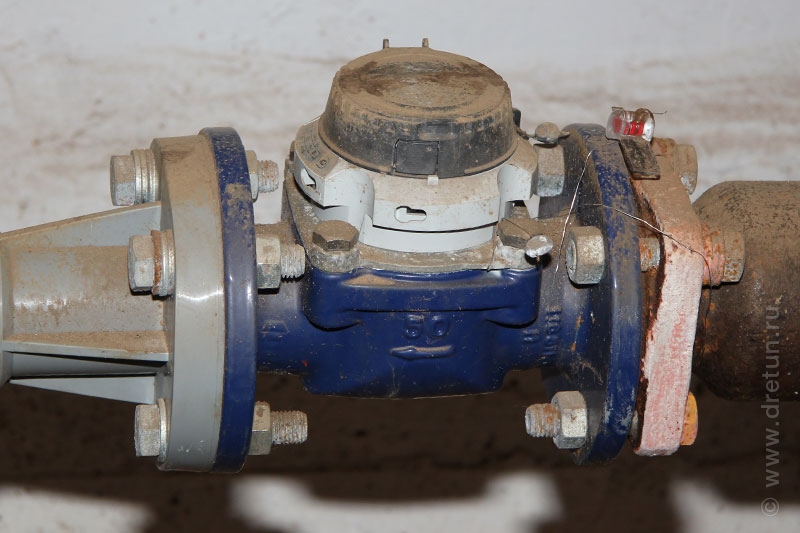
Some have additional check valve
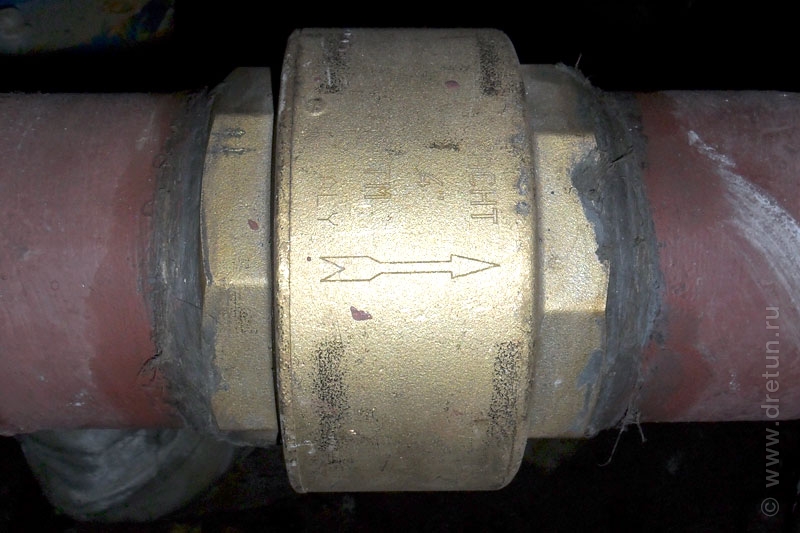
and water meter bypass.
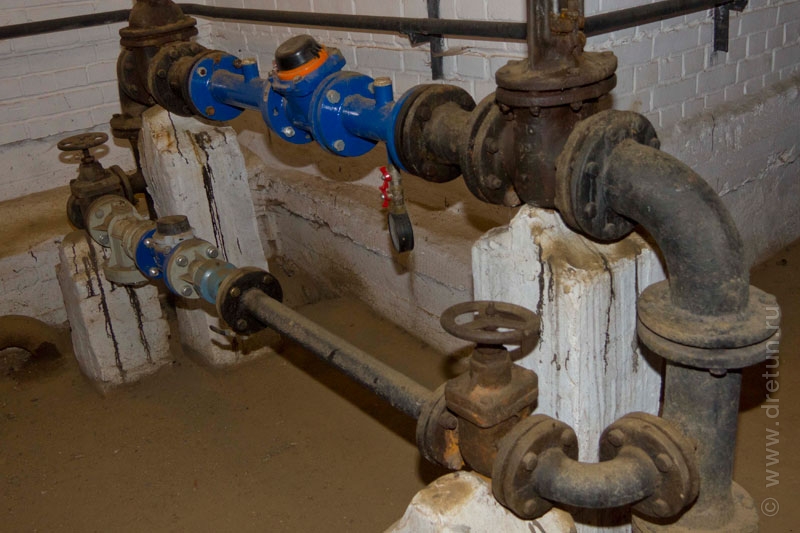
The water meter bypass is an additional meter with valves that can feed the system if the main water meter is serviced. After the meters, water is supplied to the house main


where it is distributed along risers that lead water to apartments on floors.


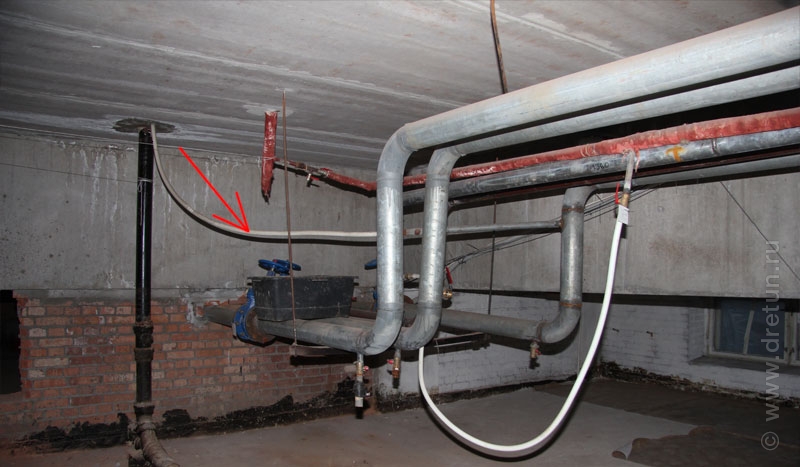
What is the pressure in the system?
9 floors
Houses up to 9 floors high have bottom pouring from bottom to top. Those. from the water meter to big pipe water goes down the risers up to the 9th floor. If the vodokanal is in a good mood, then at the input of the lower zone there should be approximately 4 kg/cm2. Given a pressure drop of one kilogram, for every 10 meters of water column, residents on the 9th floor will receive approximately 1 kg of pressure, which is considered normal. In practice, in old houses, the input pressure is only 3.6 kg. And the inhabitants of the 9th floor are content with even less pressure than 1kg / cm2
12-20 floors
If the house is higher than 9 floors, for example 16 floors, then such a system is divided into 2 zones. Upper and lower. Where the same conditions remain for the lower zone, and for the upper zone the pressure is raised to about 6 kg. In order to raise the water to the very top into the supply line, and with it the water rises up to the 10th floor. In houses above 20 floors, the water supply can be divided into 3 zones. With such a supply scheme, the water in the system does not circulate, it stands on a backwater. In a high-rise apartment, on average, we get pressure from 1 to 4 kg. There are other values, but we will not consider them now.
Hot water supply or DHW
In some low-rise buildings, hot water is connected in the same way, it stands on a backwater without circulation, which explains the fact that when you open a tap with hot water, some time goes cold, cooled water. If we take the same house with 16 floors, then in such a house the hot water system is arranged differently. Hot water, like cold water, is also supplied to the house through a large pipe, and after the meter it goes to the house main
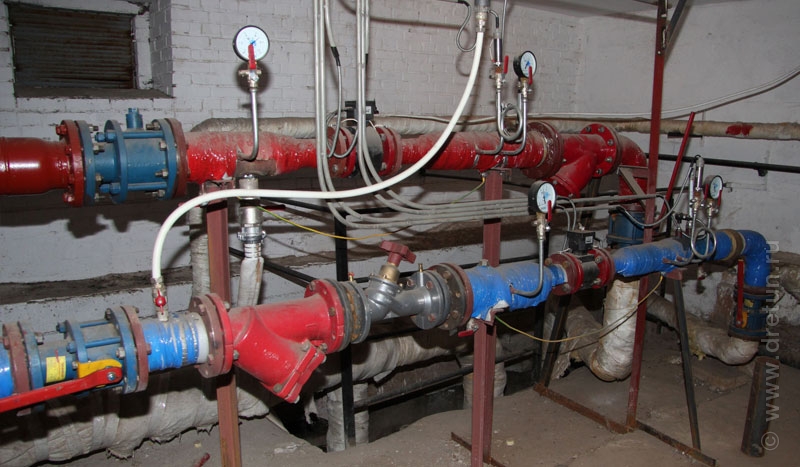
which raises the water to the attic where it is distributed along the risers and descends to the very bottom into the return line. By the way, hot water meters count not only the volume of lost (consumed) water in the house. These counters also count the temperature loss (hygocalories)
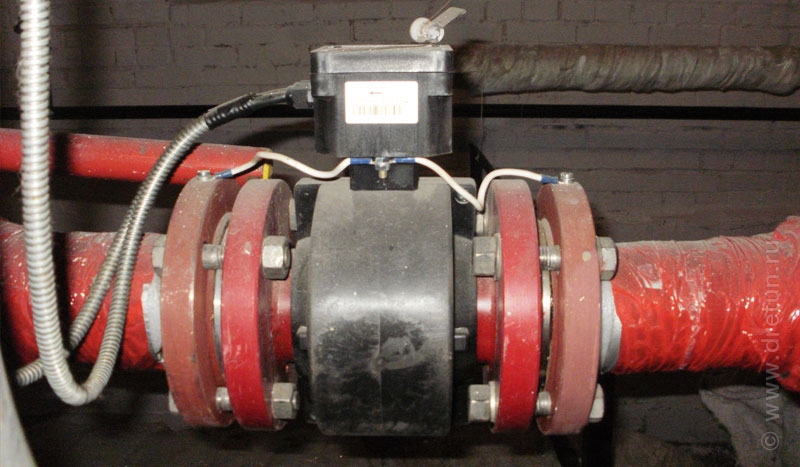
The temperature is lost when water passes through apartment heated towel rails, which play the role of risers.

With this scheme, hot water always circulates. As soon as you turn on the faucet, hot water is already there. The pressure in such a system is approximately 6-7 kg. on the supply and slightly lower on the return to ensure circulation.

Due to circulation, we get pressure in the riser, in the apartment 5-6 kg. and immediately we see the difference in pressure between cold and hot water, from 2 kg. This is precisely the essence of squeezing hot water into cold water in the event of a malfunction of plumbing fixtures. If you have noticed that you still have more pressure on hot water than on cold water, then be sure to install a check valve at the cold inlet, and control valves can be included in the hot water inlet, which will help equalize the pressure by about one digit with cold. Pressure regulator installation example
In order for hot water to flow immediately from the tap, a water heater alone is not enough. It is also necessary to ensure proper circulation of water. Often, installed hot water supply consumes too much water and energy. This is because the consumer is forced to drain cool water while the water heater is turned on. full power. Is it possible to make hot water flow as soon as we turn on the faucet? This issue requires detailed consideration, and recommendations alone are not enough here.
First of all, it is important to understand that the circulation of hot water in the appropriate circuit is not a panacea. Sometimes it is not needed at all, for example, when the instantaneous water heater is located almost at the very point of analysis. In this case, the waiting time for hot water is calculated in seconds. The organization of circulation here will be clearly superfluous. But this does not happen often, since it is far from always beneficial to install your own water heater at each washbasin, sink or bath. If there is gas in the house, then a centralized water heater is usually used, to which all water points are connected. But even if there is no gas, then installing many electric tankless water heaters can cause serious technical problems. The fact is that these are very powerful devices - from 3 kW and above. But to withstand such a load, especially if several water heaters are used at the same time, household electrical network most often unable to. It will be necessary either to lead separate powerful lines to them, or to abandon individual water heaters for each draw-off point.
When is circulation in the DHW circuit necessary?
Centralized water heating is best way provision of hot water supply in large houses. In this case, the system must necessarily include storage water heater or an indirect heating boiler used in tandem with a single-circuit boiler. This is necessary so that a certain amount of hot water is constantly available to consumers. The capacity of the boiler is determined by the estimated water flow. Up to the set temperature, the water in the boiler is heated by a built-in heating element or from a heat exchanger connected to the boiler. When hot water is not required, the system is in standby mode. But when you open a hot water tap, the system turns on, providing immediately enough of it. The volumes of boilers can be from several tens to several hundred liters. At the same time, unlike instantaneous water heaters, the flow rate is not limited.
However, the centralized hot water supply system also has its drawbacks, although objectively it is better than others. The fact is that the pipes that connect the water points to the boiler have, as a rule, great length, and the water in them will cool down if it is not used for a long time. The consumer thus finds himself in a situation where, when hot water is opened, barely warm or cold water flows from the tap for some time. The waiting time depends on the length of the pipes and can last up to 30 seconds. It's too long and wasteful too. And this is not about the loss of several tens of liters of cold water, but about the loss of preheated water. In this case, only the circulation of water in the DHW circuit can help.
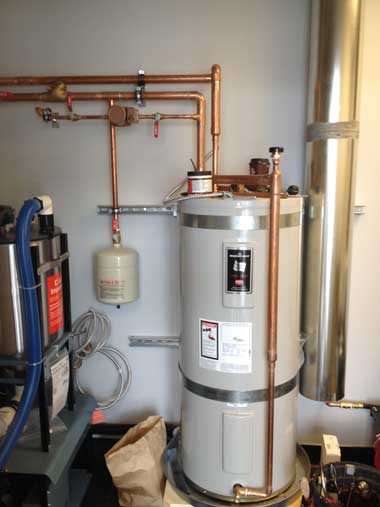 Double-circuit boilers and columns, as well as electric instantaneous water heaters they can also work in centralized hot water supply systems at home, but are not able to do this economically and comfortably for the consumer. It is advisable to use them in small cottages, where there are few water points and they are all concentrated near the water heater. However, in this case, it is better to use only one tap at a time, and not several.
Double-circuit boilers and columns, as well as electric instantaneous water heaters they can also work in centralized hot water supply systems at home, but are not able to do this economically and comfortably for the consumer. It is advisable to use them in small cottages, where there are few water points and they are all concentrated near the water heater. However, in this case, it is better to use only one tap at a time, and not several.
DHW circulation
In order for hot water to be available anywhere in the system, it is necessary to assemble such a circuit through which it will circulate continuously, coming from the boiler or storage water heater and returning to it if the system is in standby mode. Thanks to this, the water in the pipes never cools down and is always available to users.
The circulation in the DHW circuit can be natural due to convection. However greater efficiency can be achieved using forced circulation with a small pump.
Modern household circulation pumps are practically silent and have a power of only a few tens of watts. They are easy to operate and require virtually no maintenance. However, these are not the circulation pumps that are used in heating systems. They are better protected against corrosion, since the water in the DHW circuit is saturated with air, unlike closed systems CO. Thus, the rotor and other elements in contact with water are made of oxygen-insensitive materials.
Experts recommend using circulation if the length of the pipe from the hot water riser to the draw-off point exceeds 2 m. If the house has two or more hot water circuits located on different distance from the water heater, it is advisable to use special control valves that equalize the pressure in the system. The absence of such valves leads to an imbalance in the system: water begins to circulate in the circuit where there is the least hydraulic resistance.
Modernization of the circulation system
Instant access to hot water circulation system is possible only if it is constantly heated, which, of course, is associated with certain energy costs. However, these costs are less than when we simply drain the cooled water down the drain. However, there is an opportunity to make the circulation system even more economical. 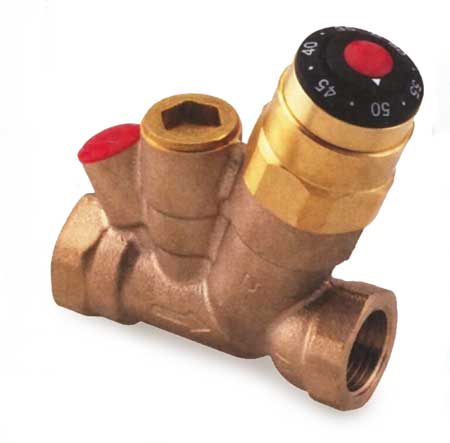
IN Lately specialists began to use new thermostatic balancing valves (photo on the right), which calibrate the duct of such a section that will provide minimal water circulation, but while maintaining the set temperature in the circuit. When the water cools, the valve increases the capacity. If the temperature rises above a predetermined level, then the valve is closed, thus ensuring optimal mode circulation.
Such valves allow you to set the temperature of the water in the system within 40-60°C. In the past, throttling flanges or pre-adjusted control valves were used for this. These devices are not automatic and therefore require regular adjustment. New thermostatic valves themselves determine the necessary distribution of water depending on the prevailing conditions, for example, when actively analyzing water from several taps. This makes it possible to ensure optimal distribution of water and somewhat reduce energy costs. In addition, thermostatic valves allow you to maintain different temperature water in the circuits. So, with their help, you can make it so that hotter water enters the kitchen than the bathroom, where there is no need to supply water hotter than 45 ° C.
 DHW with circulation and thermostatic valve. A simple circulation circuit with a new generation thermostatic valve consists of a hot water source (boiler, storage water heater), a circulation pump, a thermostatic valve, pipes and taps. Hot water from the boiler enters the circulation circuit. The thermostatic valve is installed on the return pipe after the last draw-off point, but before the circulation pump, which is located immediately before the "return" inlet to the boiler. If the system consists of several hot water circuits, then they are connected in parallel, i.e. depart from the supply pipe and return through thermostatic valves to a common return pipe, which, passing through the circulation pump, is connected to the boiler.
DHW with circulation and thermostatic valve. A simple circulation circuit with a new generation thermostatic valve consists of a hot water source (boiler, storage water heater), a circulation pump, a thermostatic valve, pipes and taps. Hot water from the boiler enters the circulation circuit. The thermostatic valve is installed on the return pipe after the last draw-off point, but before the circulation pump, which is located immediately before the "return" inlet to the boiler. If the system consists of several hot water circuits, then they are connected in parallel, i.e. depart from the supply pipe and return through thermostatic valves to a common return pipe, which, passing through the circulation pump, is connected to the boiler.
Maintenance optimum temperature in the circulation circuits, it can also be provided circulation pumps controlled by the thermostat. When the temperature of the water in the circulation circuit reaches a predetermined level, the thermostat turns off the pump and turns it on when the water temperature drops by a few degrees.
The pump can also be controlled by a programmable timer, and this scheme is quite common. Its advantage is that circulation in the DHW circuit occurs only during the period of its use. For example, the pump may turn off at night when everyone in the house is asleep. However, it makes sense to choose this option if the family lives according to a certain established regime, which, however, is not uncommon. The energy savings in this case are the highest. Typically, timer systems also allow manual control of the pump. For example, if on some holiday hot water will be used at night, then it is enough to turn on the pump and the circulation will run continuously.
Manual control of the pump is, in principle, very reliable, but there are inconveniences, since you have to turn on the pump in advance, and then remember to turn it off. Recommended for manual control additionally equip the pump switch with a shutdown timer. However, even in this case, situations will often arise when one of the residents forgets to turn on the pump and drains all the water from the pipes.
Our topic today is the hot water system apartment building: diagrams, main elements and typical problems that a homeowner may face. So let's get started.
DHW and heat supply scheme
Hot water supply scheme in apartment building can be implemented in two fundamentally different ways:
- It uses water from the cold water supply and heats it with heat from offline source. It can be a boiler installed in the apartment, geyser or a heat exchanger using a heat carrier from a local boiler house or CHP for heating;
Please note: the advantage of such a scheme is higher water quality. It must comply with the requirements of GOST R 51232-98 (“Drinking Water”). In addition, the parameters of hot water supply (temperature and pressure) rarely deviate from the nominal values; in particular, the DHW pressure is always equal to the cold water pressure, taking into account the head loss during draw-off.
- It supplies the consumer with water directly from the heating main. This is exactly what has been implemented in the vast majority of residential and administrative buildings of Soviet construction, which make up 90% of the housing stock in the vastness of our great and immense. In what follows, we will focus our attention on it.

Dear reader can find additional information in the video in this article.
Elements
So, what elements does the water supply scheme of an apartment building include?
Water meter assembly
He is responsible for supplying cold water to the house.
The water meter performs several functions:
- Provides accounting for water consumption (as its name unambiguously reminds);
- Allows you to turn off cold water for the whole house to repair shut-off valves or eliminate spill leaks;
- Provides coarse filtration of water at the entrance to the house. To do this, the water meter is equipped with a sump.

The composition of the water meter includes:
- Entrance and house shut-off valves(gate valves or Ball Valves located on the side of the input of cold water supply and the intra-house water supply system);
- Water meter (usually mechanical);
- Gryazevik (tank with drain tap, in which, due to the slow movement of water through its volume, sand, large particles of rust and other debris settle). Often, instead of a sump, the water meter unit is equipped with a coarse filter, in which a stainless mesh is responsible for cleaning the water from debris;
- Pressure gauge or control valve for its installation;
- Optionally, the water meter can be equipped with a bypass line with its own valve or a ball valve on it. The bypass opens when the water meter is dismantled for the period of repair or verification. At other times, it is closed and sealed by a representative of the organization - the water supplier.

It is curious: "Vodoset", or the organization replacing it, is responsible for the state of input of cold water up to the first flange of the inlet valve. The water meter is the responsibility of the organization serving the house.
Elevator node
An elevator unit, or a heating point, also combines whole line features:
- Responsible for the operation and regulation of the heating system;
- Provides the house with hot water. Water (it is also the heat carrier of the heating system) is supplied to the domestic hot water system directly from the heating main;
- Allows, if necessary, to switch the hot water supply between the supply and return threads of the heating main. The changeover is necessary because in winter the flow temperature can reach an impressive 150°C, while the permissible maximum hot water temperature is only 75°C.
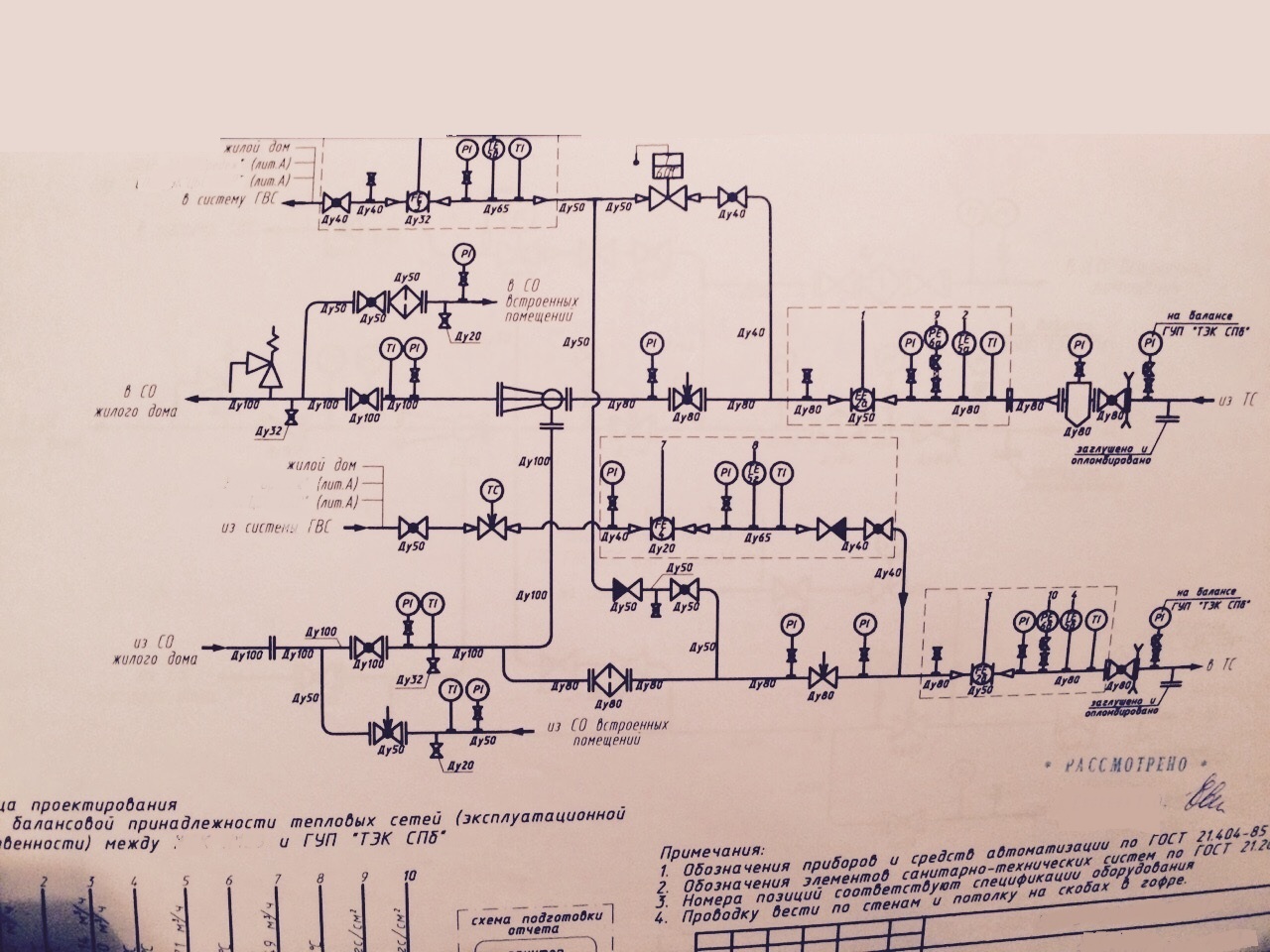
A short lecture on physics: water is heated above the boiling point without evaporating, thanks to overpressure in the heat pipe. The higher the pressure, the higher the boiling point of liquids.
The heart of the elevator unit is a water jet elevator, through the nozzle of which hot and more high pressure supply water is injected into the mixing chamber filled with return water. Thanks to the operation of the elevator, a large volume of water with a relatively low temperature passes through the heating system of the house; at the same time, the consumption of water from the supply is relatively small.

DHW tie-ins are located between the inlet valves and the elevator. There can be two of these tie-ins (one for supply and return) and four (two for each thread). The first scheme is typical for houses built in the 70s of the last century and older buildings, the second - for more or less modern buildings.
Why are additional inserts needed?
To answer this question, we need to jump ahead and study the water supply schemes in apartment buildings.
On cold water, a dead-end scheme is always used: the water meter goes into a single filling, that one - into risers that end with intra-apartment connections. Water moves in such a water supply circuit only during drawdown.
What's going on in the GVS?
In houses with two DHW tie-ins to the elevator unit, the same scheme is used.
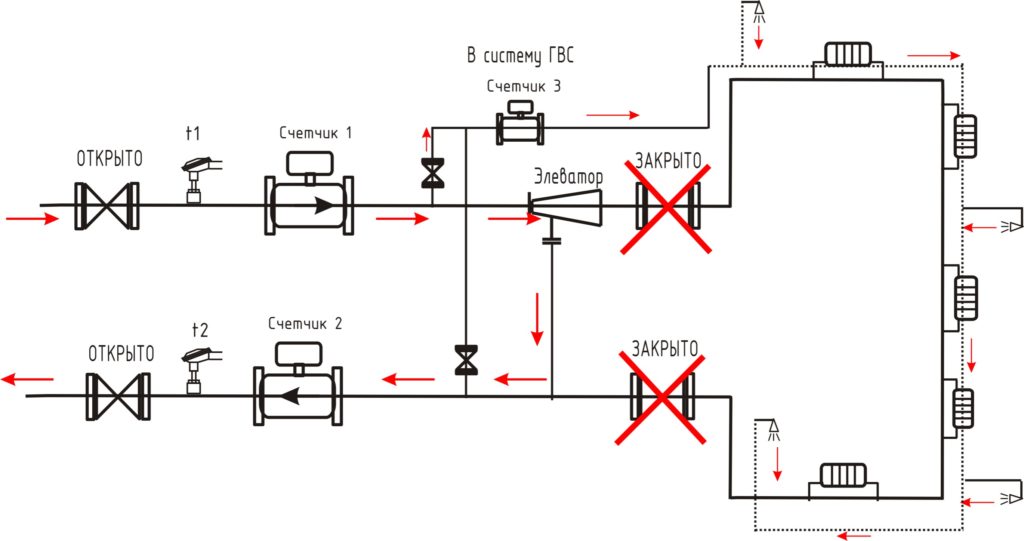
However, it has two rather annoying drawbacks:
- If there was no water intake for your riser for a long time, the water has to be drained for a long time before it heats up;
Note: if you have mechanical meters on your pipes, they will register the flow of water, ignoring its temperature. As a result, you will overpay a hundred or two rubles a month for a service that you actually did not use.
- Towel dryers installed on the hot water pipes, which are also responsible for heating the bathroom, will only heat up when hot water is drawn in your apartment. And correspondingly, most time will remain cold. Hence - the cold and dampness in the bathrooms, often becoming the cause of the appearance of the fungus.
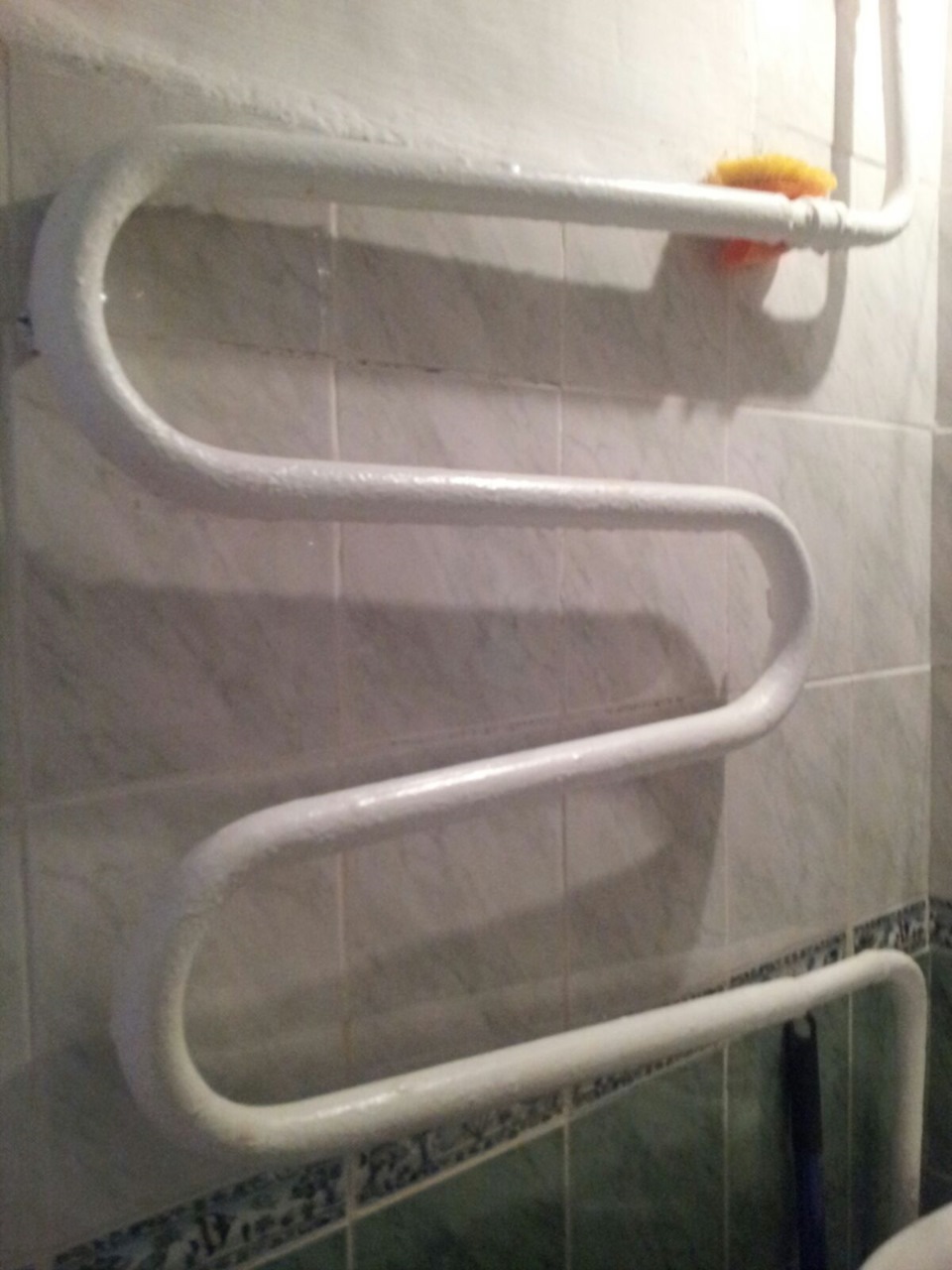
Elevator unit with four DHW tie-ins provides continuous circulation of hot water through two bottlings and risers connected by jumpers.
DHW operation is possible according to one of three schemes:
- From the supply to the return pipeline. Such a hot water supply scheme for a multi-storey building is used only in summer, when the heating is turned off: a bypass between the heating mains would reduce the pressure drop across the elevator;
- From feed to feed. This scheme is for autumn and spring with their relatively low supply temperature;
- From back to back. So DHW is turned on for the period of cold weather, when the supply temperature exceeds the threshold 75 degrees.
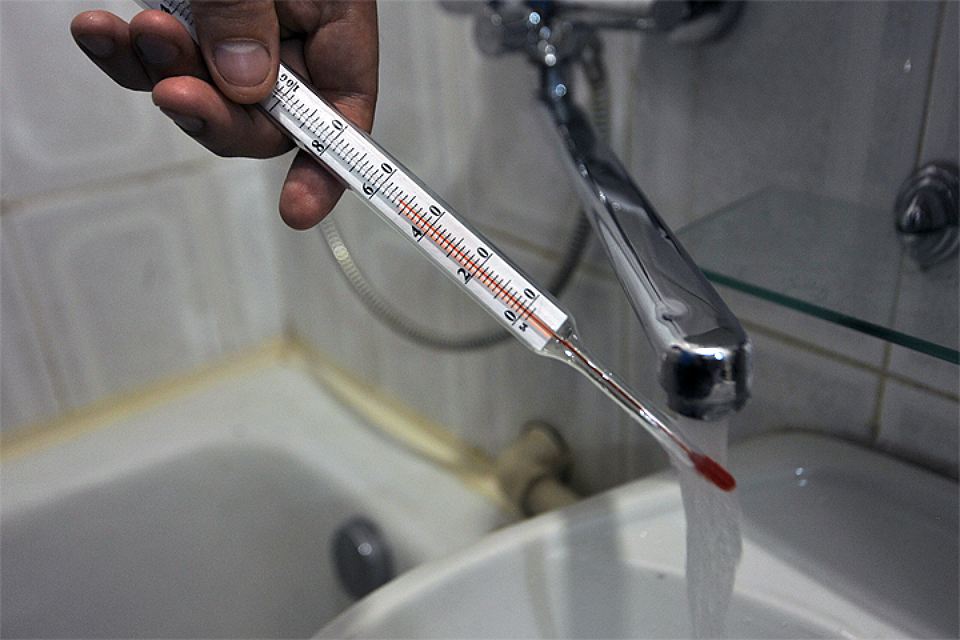
Readers who have not forgotten the basics of physics will have a reasonable question: how is the pressure difference necessary for continuous circulation between two tie-ins in one thread provided?
Remember: water is constantly moving through the pipes between the inlet valves and the elevator. To create a pressure difference, it is only necessary to restrict the flow by an obstacle installed between the tie-ins. This role is performed by a retaining washer - a metal pancake with a hole in it.
Captain Evidence suggests: a significant restriction of the patency of any pipeline would interfere with the operation of the elevator unit, so the diameter of the retaining washers is a millimeter larger than the diameter of the elevator nozzle. That, in turn, is calculated by the organization (heat supplier) in such a way that the return temperature at the outlet of heating point matched the temperature chart.
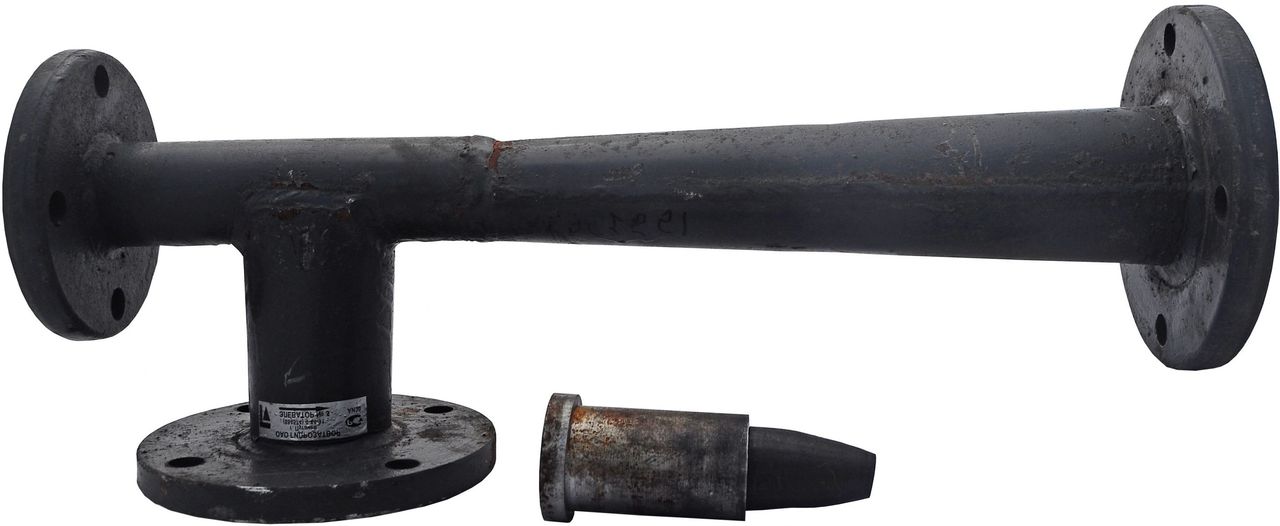
Bottling
Water supply spills are called horizontal pipes, passing through the basement or subfloor of the house, and connecting the risers with the elevator and water metering units. There is always one bottling of cold water, there are two bottlings of hot water in the circulating hot water supply system.
The filling diameter, depending on its material and the number of water consumers, varies from 32 to 100 millimeters. The latter value is clearly redundant; however, the water supply project for an apartment building had to take into account not only Current state pipelines, but also their inevitable overgrowing with deposits and rust. After 20-25 years of operation, the clearance of the pipe in cold water decreases by 2-3 times.
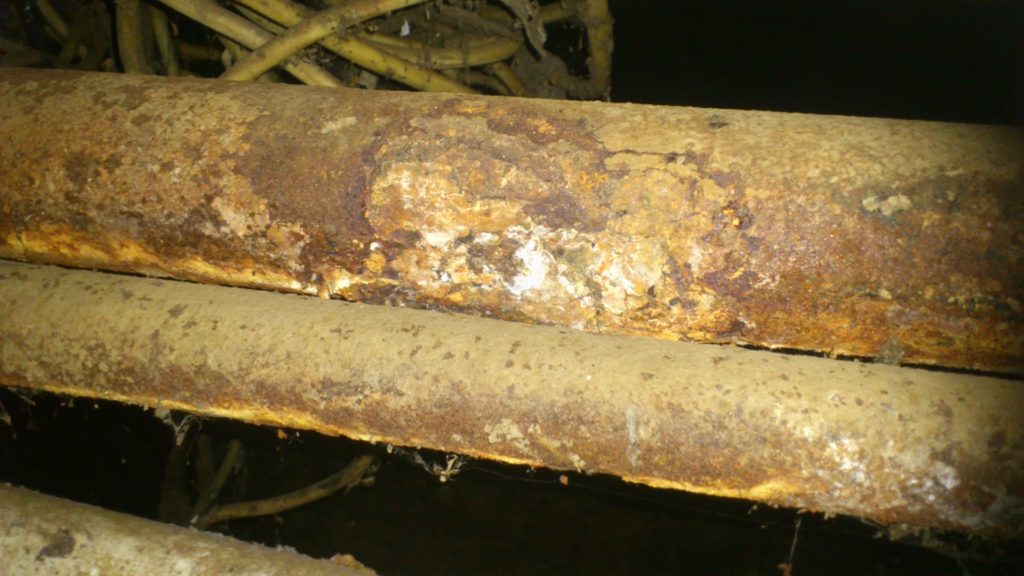
Risers
Each riser is responsible for the vertical distribution of water in the apartments located one above the other.
The most typical scheme is one group of risers (cold water and hot water, optionally heated towel rails) per apartment; however, other options are also possible:
- Two groups of risers can pass through the apartment, supplying water to a bathroom and kitchen spaced over a long distance;
- Risers in one apartment can supply water not only to its residents, but also to neighbors behind the wall;
- On DHW, circulation jumpers can combine up to 7 risers from several apartments.
The typical diameter of cold water and hot water risers is 25-40 mm. The diameter of risers for heated towel rails and idle (without plumbing fixtures) circulation risers is usually smaller: they are mounted with a DN20 pipe.

IN circulation scheme hot water jumpers between the risers can be located in the apartment on the top floor or taken out to the attic. Jumpers are equipped with air vents (Maevsky taps or ordinary taps), which allow bleed air that prevents circulation.
Eyeliners
Their function is to distribute water to plumbing fixtures inside the apartment. What is useful to know about water supply lines?
- Their typical size (for steel water and gas pipes) is DN15 (which approximately corresponds to an inner diameter of 15 mm). When replacing eyeliners with your own hands, it is advisable not to reduce their inner diameter - this will lead to a drop in pressure on all plumbing fixtures when parsing water on one of them;

- Since Soviet times, simple and cheap serial (tee) wiring has traditionally been used in apartments. A more material-intensive collector requires, among other things, hidden installation of connections, which greatly complicates their further maintenance;
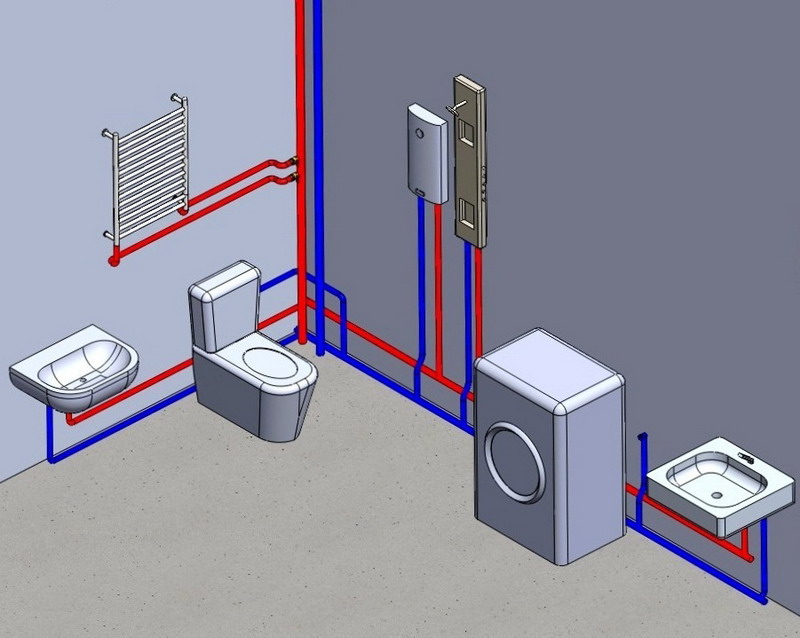
- Over time, the throughput of steel eyeliners drops noticeably, due to the notorious overgrowing with deposits. In such cases, the pipes are cleaned with a thin steel string or, quite simply, they are changed to new ones.
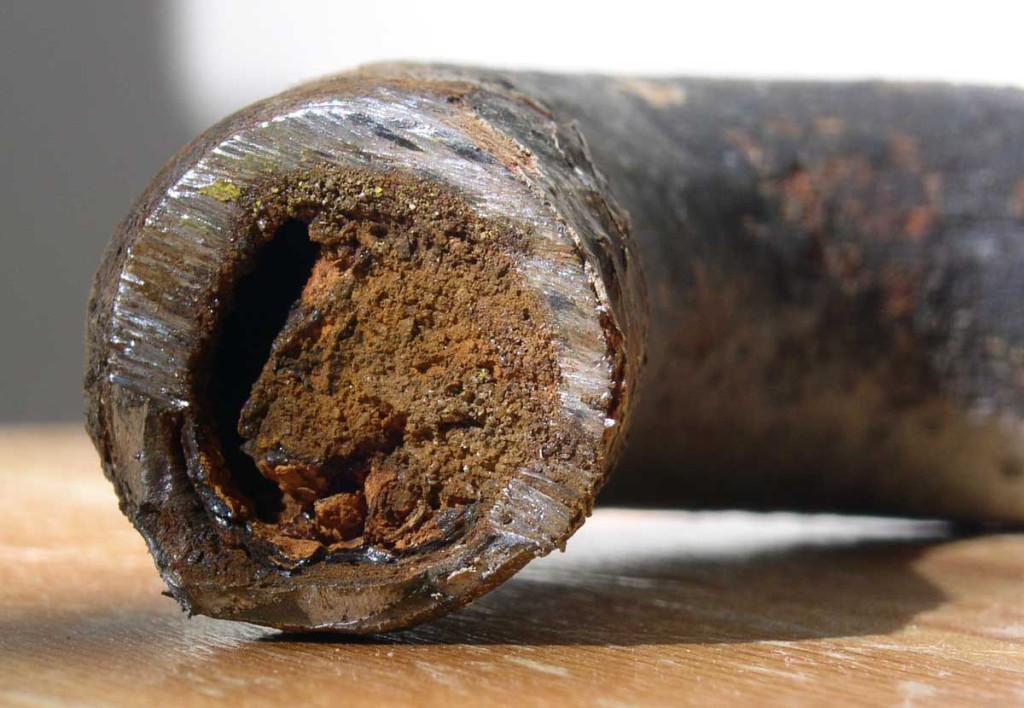
If you decide to replace eyeliners, we strongly advise you to opt for metal pipes. The instruction is associated with a fairly high probability of water hammer and deviations from the standard temperature in the DHW system: for example, if a forgetful locksmith does not switch the water supply from supply to return at the first frost, the water temperature can significantly exceed the maximum for any polymer pipes 90-95 degrees.
Which pipes can be used for water supply:
| Image | Description |
|
|
have been used for water distribution since the time of stalinok. Unlike black steel, galvanizing is not afraid of deposits and rust. Important point: galvanized only mounted on threaded connections, because during welding, the zinc in the weld area completely evaporates. |
|
|
have long proved their reliability and durability: the oldest operating copper water pipes are over a century old, and they are in excellent condition. Solder connections copper pipes- maintenance-free, and can be mounted hidden, in a coupler or strobes. |
|
|
Corrugated pipes from of stainless steel stand out from competitors simple installation. For their connection, compression fittings are used, for the assembly of which only two adjustable wrenches are needed. The service life of the pipes themselves is characterized by manufacturers as unlimited; however, after 30 years, you, or more likely your children, will have to change the silicone o-rings in the fittings. |
Faults
What violations in the operation of the water supply system can the owner of the apartment eliminate on his own? Here are some of the most typical situations.
Leaking valves
Description: leak on the stem of screw valves.
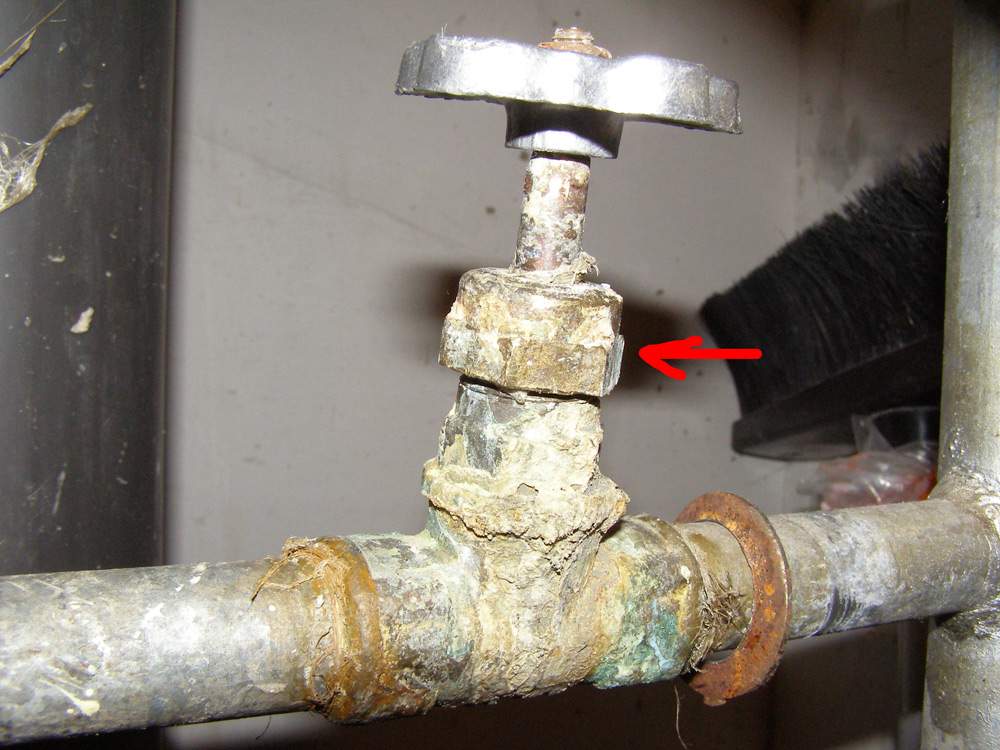
- Reason: partial wear of the oil seal or wear of the rubber sealing ring.
- Solution: open the valve knob as far as it will go. In this case, the thread on the rod will press the stuffing box from below, and the flow will stop.
Noise of cranes
Description: when opening a hot or (more rarely) cold water tap, a loud noise is heard and the mixer is vibrating. Alternatively, your neighbor's faucet may be the source of the noise.

Cause: a deformed and crushed gasket on a screw valve box in a half-open position causes a continuous series of water hammers. Its valve closes the seat in the mixer body with a frequency of fractions of a second. On hot water, the pressure, as a rule, is noticeably greater, so the effect is more pronounced on it.
Solution:
- Turn off the water to the apartment;
- Unscrew the problematic crankbox;
- Replace the gasket with a new one;
- Remove the chamfer from the new gasket with scissors. Chamfered will eliminate the beating of the valve in a turbulent jet of water in the future.

By the way: ceramic crankboxes are fully compatible with screw threads, and are devoid of the described problem.
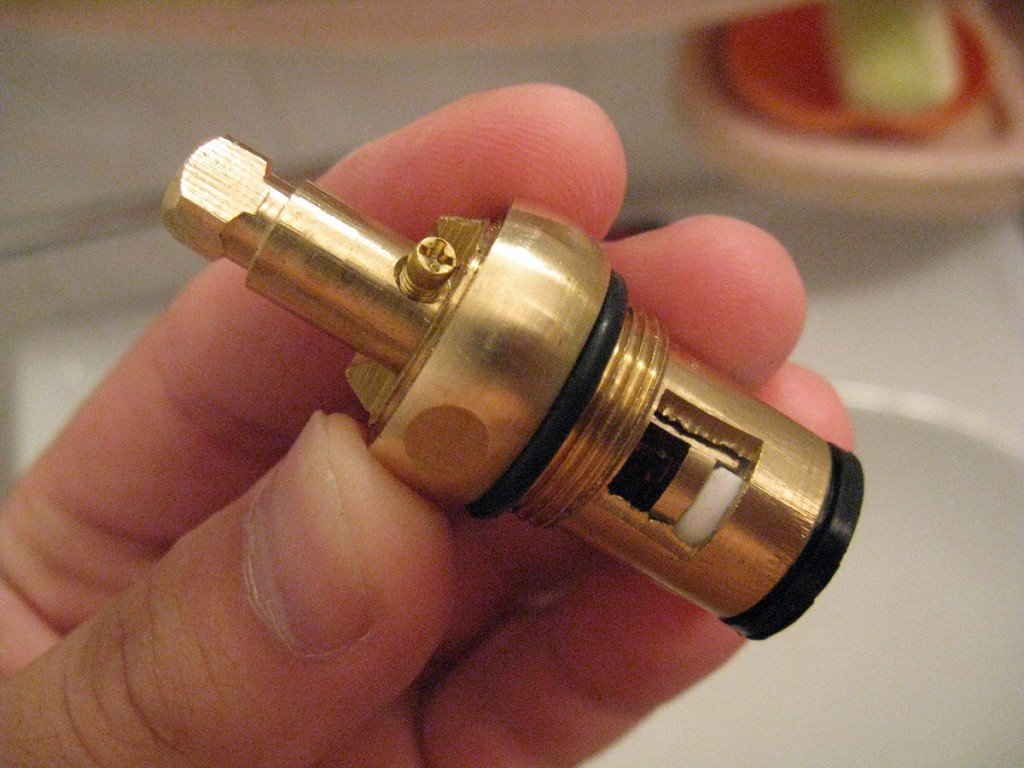
Cold towel warmer
- Description: The heated towel rail in your bathroom is cold and does not heat up.
- Cause: if the water supply scheme of a residential apartment building uses continuous circulation of hot water, the air remaining in the jumper between the risers after the water is discharged is to blame (for example, for revision and repair of shutoff valves).
- Solution: go up to the top floor and ask your neighbors to bleed air from the jumper between the hot water risers and heated towel rails.
If for some reason this is not possible, the problem can be solved from the basement:
- Shut off the DHW riser passing through your apartment, to which your connections are connected;
- Climb into the apartment and open the hot water taps to failure;
- After all the air comes out of the riser through them, close the taps and open the tap on the riser.
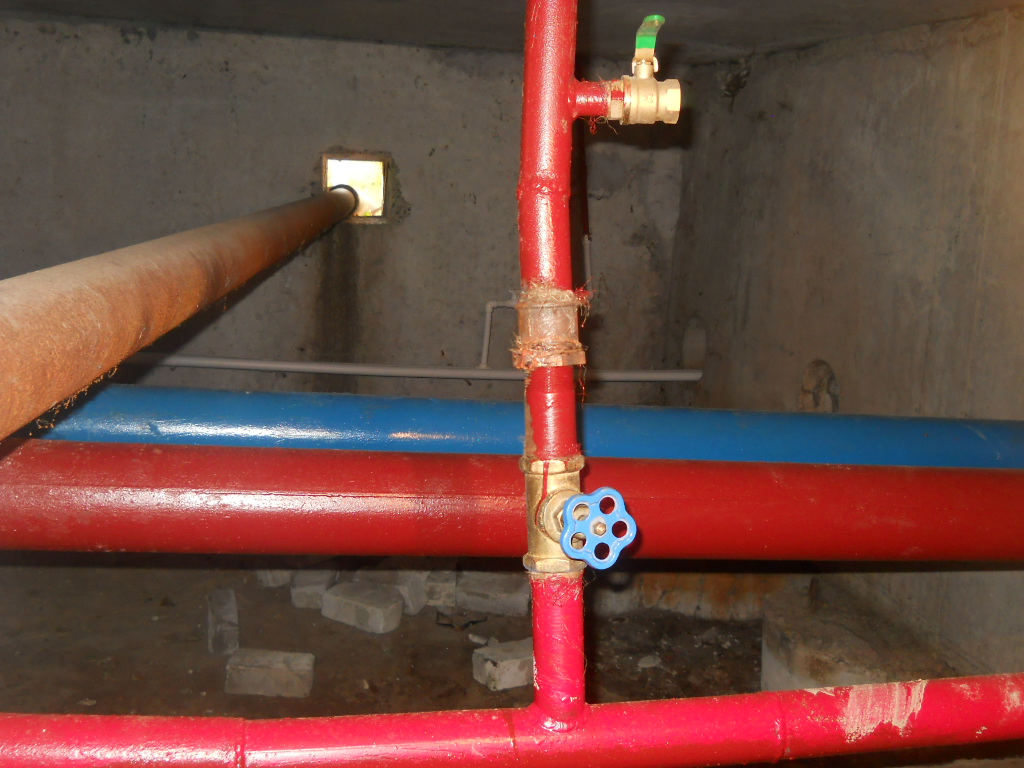
Nuance: immediately after the end of the heating season, there may be no pressure difference between the heating mains. In this case, the heated towel rails will be cold even if there are no air pockets in the risers.
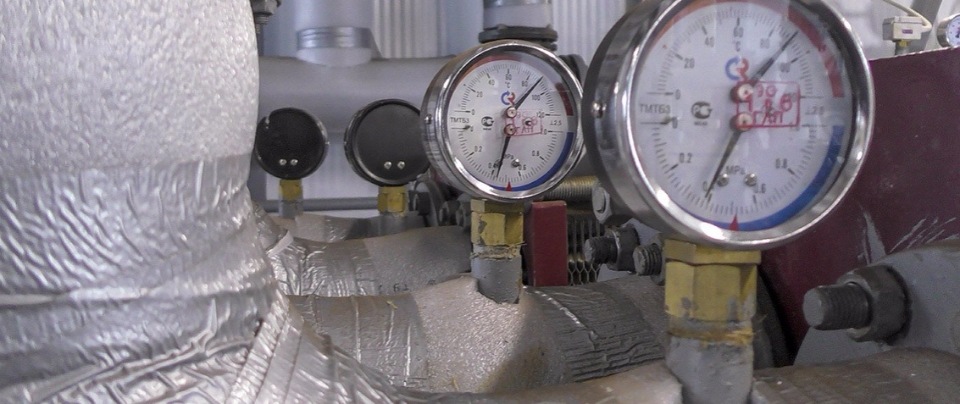
Conclusion
We hope that our material has helped you to study the water supply of an apartment building: the water supply scheme described by us is the most common. Good luck!


